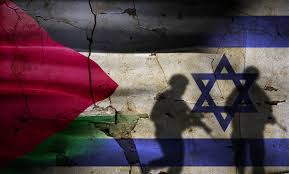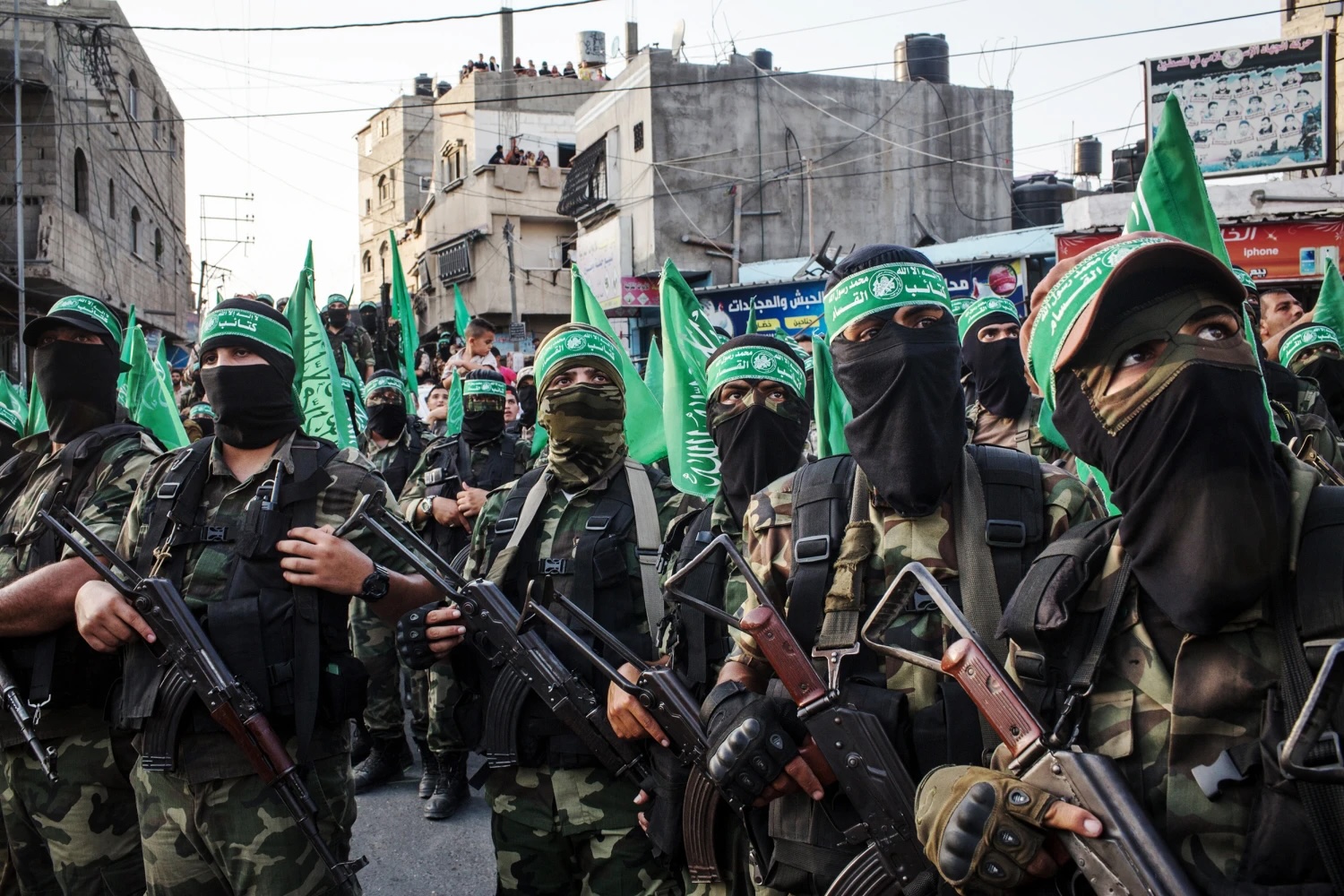By Osman Softić || 1 November 2024
 The Israeli genocide against the Palestinians of Gaza has been going on for more than 12 months. By bombarding Gaza with devastating American-made bombs, Israel, with the blessing of Washington and its European allies, killed over 43 thousand Palestinians in Gaza (of which 18 thousand were children). The number of murdered Palestinians is far greater than the official statistics (many are missing and were buried in the ruins of Gaza).
The Israeli genocide against the Palestinians of Gaza has been going on for more than 12 months. By bombarding Gaza with devastating American-made bombs, Israel, with the blessing of Washington and its European allies, killed over 43 thousand Palestinians in Gaza (of which 18 thousand were children). The number of murdered Palestinians is far greater than the official statistics (many are missing and were buried in the ruins of Gaza).
The International Court of Justice (ICJ) warned Israel that it must stop genocidal assault. The extermination of Palestinians is a deliberate policy of the extremist Zionist regime in Tel Aviv in retaliation of the October 7. Operation by Hamas against Israel. Although Israelis eliminated main leaders of Hamas, they have not so far achieved the proclaimed military goals, namely: the destruction of Hamas (as military force, political organization and administrative governance in Gaza), neutralization of armed resistance, securing the return of hostages and the installation of new non-Hamas Palestinian administration in Gaza to be completely subordinated to Israel.
The Netanyahu regime is unlikely to allow the Palestinian Authority to have any political and administrative role in Gaza. Israel prefers provisional administration under the supervision of an Arab state close to Israel. However, the real goal, which the Israeli regime does not speak publicly about, is its hidden intention of direct occupation (in the north of the Gaza strip), as an initial phase of ethnic cleansing and exodus of Palestinians to Egypt or other countries. What is particularly worrying is the coordinated Israeli-American policy to establish concentration camps in Gaza, which the architects of extermination euphemistically call (bubble safety zones).
High-tech dystopia
For this purpose, private American and Israeli security contractors were hired to conduct checks and to separate civilians from Hamas fighters. Dan Cohen reported that the Biden administration has approved the deployment of 1,000 CIA-trained private mercenaries as part of a joint US-Israeli plan to turn the apocalyptic ruins of Gaza into a “high-tech dystopia,” as Cohen put it, a phenomenon of absolute control and surveillance once theorized by European philosophers Jeremy Bentham, and more recently by Michel Foucault.
The US Assistant Secretary of State for the Middle East recently proposed a plan for Gaza which includes a central role for Abu Dhabi, following the ceasefire. Barbara Leaf visited the Occupied West Bank with this intention, but the chairman of the Palestinian Authority, Mahmoud Abbas, apparently refused to see her. Abbas also rejected Abu Dhabi’s proposal, insisting that Gaza should be exclusively under the jurisdiction of the Palestinian Authority as part of the unified and sovereign political space of Palestine.
In addition to Hamas, whose military wing Al-Qassam Brigades (military formation named after Izzedine Al-Qassam), the imam who was killed by the British colonial authorities in 1936, the armed resistance to Israel is also led by Islamic Jihad, a smaller Sunni armed formation as well as Palestinian armed groups in the occupied West Bank which oppose the occupying forces and extremist Jewish settlers to whom minister of security of Israel Itamar Ben-Gvir distributed 70 thousand automatic rifles and transformed them into an armed paramilitary militia that the Israeli army uses as supplementary force to conduct (new Nakba) terror and ethnic cleansing in order to eliminate Palestinians from the occupied West Bank.
It is unfortunate that the Palestinian Authority (PA), opposes and sanctions the armed resistance of their own citizens under the so-called security coordination with Israel. The Israeli regime had been turning Palestinians against each other for more than three decades in order to weaken their collective political resolve and armed resistance guaranteed by international law. The Israeli Parliament recently voted against the existence of the State of Palestine in the occupied territories over which it has sovereignty even though this is contrary to international law and the commitments made within the framework of the Oslo Accords from 1993. The occupied West Bank is increasingly becoming a new Gaza, because Israel employs brutal force to quell the armed resistance, using heavy weapons and as of recently the air force.
The Nakba
 Since the declaration of Israel in 1948 and the expulsion of more than 750,000 Palestinians known as the Nakba (catastrophe), Palestinians have become exiles in their own country and millions have been displaced and concentrated in neighboring countries (most of them in Lebanon, Syria and Jordan). Those in Gaza have been imprisoned for decades, surrounded by electrified wire and concrete fences, surveillance cameras and sniper towers, forced to live in a small, cramped space that Ilan Pappe from the constellation of new Israeli revisionist historians called the largest prison camp under the open sky.
Since the declaration of Israel in 1948 and the expulsion of more than 750,000 Palestinians known as the Nakba (catastrophe), Palestinians have become exiles in their own country and millions have been displaced and concentrated in neighboring countries (most of them in Lebanon, Syria and Jordan). Those in Gaza have been imprisoned for decades, surrounded by electrified wire and concrete fences, surveillance cameras and sniper towers, forced to live in a small, cramped space that Ilan Pappe from the constellation of new Israeli revisionist historians called the largest prison camp under the open sky.
Rashid Khalidi, a well-known American-born historian of Palestine whose family roots are in Jerusalem, argued that Gaza may not have been a Nazi-type concentration camp, but it certainly resembled the Warsaw Ghetto during the Nazi occupation. After 2006, when the first democratic elections were held in the Palestinian Occupied Territories, Hamas received overwhelming support but was ready to share political power with Fatah, the largest political faction that dominates the Palestinian Liberation Organization (PLO). However, the Islamist armed resistance organization (Hamas) was not allowed to assume leadership of the Palestinian Authority due to intra-Palestinian conflict staged by Israel and the US. Hamas nevertheless managed to take control of Gaza despite attempts by its opponents to prevent it.
Soon after Hamas took control of Gaza, Israel had imposed a complete blockade on the enclave and subjected its residents to atrocious living conditions. While serving as political administration of Gaza, Hamas, by periodically launching primitive and poorly effective rockets at Israel, repeatedly tried to change the unbearable position of the residents of Gaza (status quo) by putting pressure on the occupying power in order to return the Palestinian cause to the center of international attention. Israel would respond to Hamas attacks by using brutal force in retaliation, killing civilians and destroying infrastructure. Hamas sometimes managed to make minor concessions in the negotiations on a cease-fire and non-aggression in order to improve as much as possible the difficult living conditions under siege. An important mediating role was played by Qatar, the sponsoring state of Hamas, whose government communicated to both sides. Doha also bores the financial burden of the reconstruction of Gaza.
Equilibrium of violence
This complex dynamic of the relationship between Hamas and Israel, which Tareq Baconi, a Palestinian academic expert on Hamas, called an ‘equilibrium of violence’, was seen as a modus vivendi that perfectly suited Israel as Tel Aviv managed the conflict that way, keeping Gaza’s 2.3 million Palestinians under total siege and isolation while it used the Hamas attacks on Israel to demonstrate to the world that Hamas was a “militant terrorist organization”, “whose charter did not recognize Israel, with which no compromise can be reached and which does not deserve place at the negotiating table”. Israel used a massive military force known as “the Dahiya doctrine” – Dahiya being the southern Shiite neighborhood of Beirut which Israel periodically levelled to the ground in order to turn the civilian population against Hezbollah.
Every time Hamas “crossed Israel’s red line” the IDF heavily bombed Gaza. The Israeli occupiers euphemistically labeled the bombing of civilians and the destruction of infrastructure of the Gaza strip as mowing the lawn. Due to existence of a long-standing tacit understanding between Hamas and Israel, according to which Hamas managed to ease some aspects of the blockade in the past few years, there was a general perception in Israel that Hamas not only did not have the capacity to carry out serious military operations inside Israel, but that it did not even intend to do so, estimating that excessive violence was not in the interest of Hamas, precisely because of the existence of an equilibrium of violence between the occupiers and the occupied.
Nevertheless, on October 7, 2023, Hamas launched an unexpected attack on Israel, which was followed by Israeli retaliation, genocide and destruction that continues today. Although Hamas tried to change the status quo (equilibrium of violence), Israel used this attack as justification for a campaign of genocide and settling scores not only with Hamas but also with the wider resistance movement in the region, bombing Lebanon and targeting leading figures of the resistance, including Syed Hassan Nasrullah and most of the top leaders of Hezbollah in Lebanon.
 Yahya Sinwar, the leader of Hamas and the architect of the Al-Aqsa Flood military operation, previously succeeded in opening the Rafah border crossing with Egypt, increasing concessions and the number of permits for the crossing of workers from Gaza to Israel for seasonal work. He also improved Hamas’ relations with Egypt, Hezbollah, Iran and Syria. These relations were damaged during the war in Syria. During that time, Sinwar thoroughly planned the military action in secrecy and kept the operational details of the action secret even from his closest allies (Hezbollah and Iran).
Yahya Sinwar, the leader of Hamas and the architect of the Al-Aqsa Flood military operation, previously succeeded in opening the Rafah border crossing with Egypt, increasing concessions and the number of permits for the crossing of workers from Gaza to Israel for seasonal work. He also improved Hamas’ relations with Egypt, Hezbollah, Iran and Syria. These relations were damaged during the war in Syria. During that time, Sinwar thoroughly planned the military action in secrecy and kept the operational details of the action secret even from his closest allies (Hezbollah and Iran).
The leaders of Hamas concluded that the status quo in Gaza had become unsustainable because it did not lead to the achievement of Palestinian goals and, in addition, feared that the Palestinian question would be completely forgotten as a result of the Israeli-American initiative to normalize relations between Israel and Arab monarchies under the slogan of the so-called Abraham Accords, while ignoring the just settlement of the Palestinians under occupation. Hamas, therefore, decided on a dramatic and risky move, dealing a heavy blow on Israel. It also destroyed the myth of Israel as an invincible military, technological and intelligence power, reliant on instilling fear in order to impose hegemonic domination over the much larger and richer Arab states.
Oslo peace process
Israel was on the way to attaining its regional hegemony which it wanted to crown with normalizing relations with Saudi Arabia. In return, Israel would provide support for obtaining concessions from Washington in order to stabilize security necessary for the realization of the Saudi economic vision 2030. The Saudis asked the Americans for a clearly defined treaty on defense, the right to develop a civilian nuclear program and the finalization of the Oslo peace process (the declaration and recognition of the state of Palestine). The latter was the main stumbling block.
Hamas did not allow the realization of the aforementioned Israeli and Arab goals of the conservative monarchies without the establishment of the Palestinian sovereign state. Hamas’s military action also derailed (or delayed) the project to build a Multi-modal trade corridor (IMEC) from India through the Arabian Peninsula and Israel to Greece and Europe and it hence provoked anger and genocidal retaliation by Israel. It also repositioned the forgotten Palestinian question right in the center of global politics attracting tremendous world attention.
Regardless of Israel’s disproportionate retaliation (genocide, destruction of Gaza, absence of a ceasefire and a political solution), analysts believe that there will be no return to the earlier equilibrium of violence, because the conflict after October 7, 2023 took on a completely new dimension trajectory of which and its final outcome no one can predict with any degree of certainty.
This can be said especially after the Israeli aggression in Lebanon, direct strikes by Israel on Iran and Iran on Israel. Israel is trying to draw America into a direct armed conflict with Iran in order to eliminate Israel’s only geopolitical and military competition for primacy in West Asia, over which Israel wants to establish hegemony within the wider American global supremacy.
The Muslim Brotherhood
 The major non-Arab Muslim regional powers, Iran and Turkey, openly support Hamas and do not consider the Palestinian Islamic Resistance Movement to be terrorist, which is certainly in conflict with Western countries that unreservedly support the Israeli genocide. Turkish politics, on the other hand, considers Hamas to be ideologically like-minded, because it is the Palestinian branch of the largest Muslim movement, the Muslim Brotherhood. Throughout the genocide in Gaza, President Erdoğan has been the most vocal Muslim leader who rhetorically openly sided with Hamas. Turkey also supports the International Court of Justice (ICJ) in processing South Africa’s claim against Israel, while calling the Israeli leader Bibi Netanyahu a war criminal. Turkey is active in the humanitarian domain and tries to diplomatically help the Palestinians of Gaza.
The major non-Arab Muslim regional powers, Iran and Turkey, openly support Hamas and do not consider the Palestinian Islamic Resistance Movement to be terrorist, which is certainly in conflict with Western countries that unreservedly support the Israeli genocide. Turkish politics, on the other hand, considers Hamas to be ideologically like-minded, because it is the Palestinian branch of the largest Muslim movement, the Muslim Brotherhood. Throughout the genocide in Gaza, President Erdoğan has been the most vocal Muslim leader who rhetorically openly sided with Hamas. Turkey also supports the International Court of Justice (ICJ) in processing South Africa’s claim against Israel, while calling the Israeli leader Bibi Netanyahu a war criminal. Turkey is active in the humanitarian domain and tries to diplomatically help the Palestinians of Gaza.
Ankara has been helping the armed resistance of Hamas in a discreet way, especially given the capacities of Turkish defense industry, and as of recently, the normalization of relations between Turkey and Egypt, which may have played a critical role in more clandestine Turkey’s support. There is no evidence in the public domain to support this assumption, but this could be a logical conclusion, since Hamas would not withstand the pressure of Israel for a whole year without the delivery of effective defensive weapons. As for the diplomatic pressure on Israel, Turkey actively works through international institutions, especially the UN. Turkey also announced the introduction of a trade boycott against Israel and reduced diplomatic relations to a lower level. Calls to Ankara to block the supply of oil and gas to Israel from Azerbaijan are not realistic for now, as Turkey does not own either the gas or the pipeline which is managed by a consortium of foreign investors, primarily led by British Petroleum (BP).
The ICJ decision against Israel could serve as the only legal basis that Ankara could use for more drastic measures to cut energy supplies to Israel from Azerbaijan, but Ankara would inevitably be exposed to huge penalties that the Turkish economy would probably not withstand. In addition, the recent terrorist attack on its defense industry not too distant from the capital Ankara is an indicative example of Turkey’s vulnerability in the event of a more drastic move against Israel, which has been cultivating close relations with separatist Kurds in both Syria and Iraq.
 Osman Softić is a Research Fellow at the Islamic Renaissance Front. He holds a BA degree in Islamic Studies from the Faculty of Islamic Studies of the University of Sarajevo and has a Master degree in International Relations from the University of New South Wales (UNSW). He contributed commentaries on Middle Eastern and Islamic Affairs for the web portal Al Jazeera Balkans, Online Opinion, Engage and Open Democracy. Osman holds dual Bosnian and Australian citizenship.
Osman Softić is a Research Fellow at the Islamic Renaissance Front. He holds a BA degree in Islamic Studies from the Faculty of Islamic Studies of the University of Sarajevo and has a Master degree in International Relations from the University of New South Wales (UNSW). He contributed commentaries on Middle Eastern and Islamic Affairs for the web portal Al Jazeera Balkans, Online Opinion, Engage and Open Democracy. Osman holds dual Bosnian and Australian citizenship.

